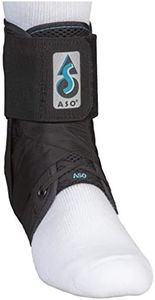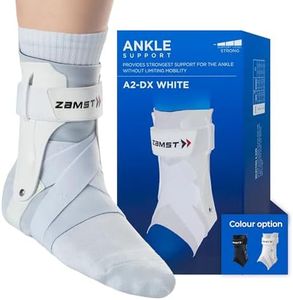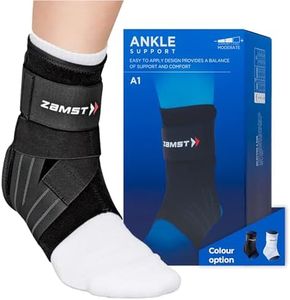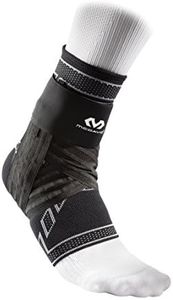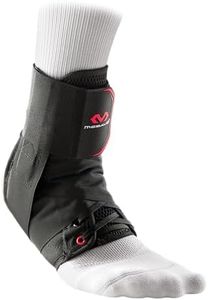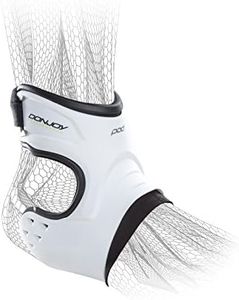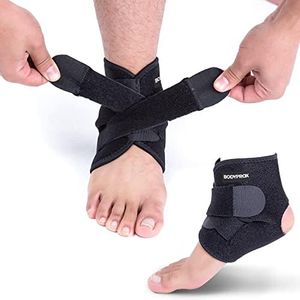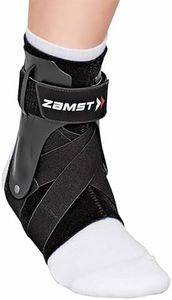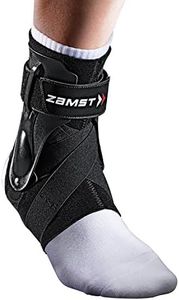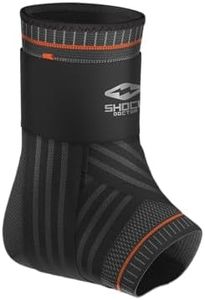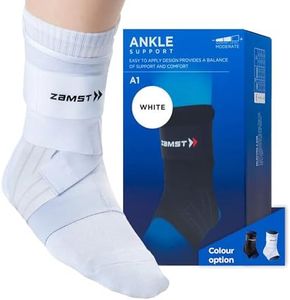We Use CookiesWe use cookies to enhance the security, performance,
functionality and for analytical and promotional activities. By continuing to browse this site you
are agreeing to our privacy policy
10 Best Ankle Braces
From leading brands and best sellers available on the web.Buying Guide for the Best Ankle Braces
When selecting ankle braces, it's important to keep your own needs and activities in mind. Ankle braces can provide support, aid in injury recovery, and help prevent further injury during sports or daily activities. The right brace can make a big difference in your comfort, mobility, and protection, so understanding the various features will help you make a better, more confident decision.Support LevelSupport level refers to how much stabilization the brace offers to your ankle. This is an essential factor because it affects both your mobility and protection. Support levels usually range from mild (basic compression sleeves), moderate (straps or figure-eight designs), to maximum (rigid braces with reinforcement). Those recovering from a serious injury or looking for high protection during intense sports might opt for maximum support, which limits movement the most. If you’re seeking light support for minor sprains or everyday comfort, a mild support brace will feel less restrictive. Choosing the right support level depends on your specific situation: if you’re returning from a more severe injury, go for more structure, but for mild prevention or comfort, lighter support is likely more comfortable.
Fit and AdjustabilityFit and adjustability determine how well the brace contours to your ankle and how securely it stays in place. This spec is important because a poorly fitting brace can cause discomfort or fail to provide proper support. Braces can have features like laces, Velcro straps, or elastic materials. Adjustable braces offer more customization and can fit a wider range of foot shapes, while fixed designs are usually easier to put on but may not fit everyone perfectly. When choosing, think about whether you want a snug, custom fit or a brace that’s quick to slip on—this will depend on your activity and personal preference.
Material and BreathabilityThe materials used for ankle braces, such as neoprene, elastic, or rigid plastics, affect comfort, durability, and how well your skin can 'breathe.' Breathability is crucial if you plan to wear the brace for extended periods or during physical activity, as it helps reduce sweat and irritation. Softer, more flexible materials are usually more comfortable for daily wear, while stronger, less breathable materials might provide extra support for short-term use. Consider your typical usage: if you need something for all-day wear or sports, look for breathable fabrics; for highly protective, short-duration needs, sturdier materials might be acceptable.
Ease of UseEase of use refers to how simple it is to put on, adjust, and take off the ankle brace. This aspect is important if you’ll need to remove or reapply the brace frequently, or if you have limited strength or dexterity in your hands. Simple slip-on sleeves are fastest, while braces with multiple straps or laces offer more adjustment but take longer to secure. If convenience is a priority for you, especially for day-to-day use or if you need to apply the brace quickly, look for simpler designs.
MobilityMobility relates to how much movement your ankle can make while wearing the brace. More restrictive braces limit movement to help with recovery, while less restrictive models allow more flexible motion. This feature is important depending on your intended use: if you’re recovering from a sprain, decreased mobility is safer, but for daily use or light support, you will want something that allows a more natural movement. Assess what activities you plan to do—walking, running, or sports—and choose a brace that matches the mobility required for those actions.
Size RangeSize range determines how well a particular product can fit different ankle and foot shapes. Selecting the correct size is crucial for both comfort and effectiveness—the wrong size could cause discomfort or insufficient support. Braces often come in various sizes or have adjustable features to cover a range. It’s usually recommended to measure your ankle and consult sizing guides to ensure a good fit. If you’re between sizes or have unique foot or ankle dimensions, opt for models with more adjustability.
